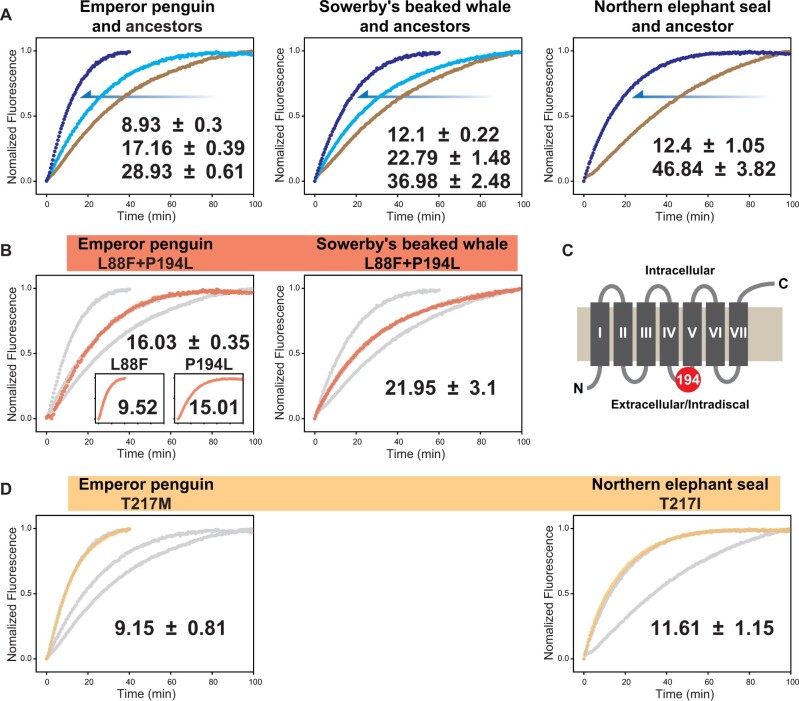Fig. 3.
Impact of convergent/parallel amino acid substitutions on retinal release. (A) Convergence in rhodopsin retinal release during the evolution of the emperor penguin, Sowerby’s beaked whale, and the northern elephant seal. In each case, the retinal release rate undergoes a downward shift from the terrestrial ancestor (brown) to the first aquatic ancestor (pale blue) to the extant taxon (dark blue). (B) For the two parallel substitutions between emperor penguin and Sowerby’s beaked whale (red), double mutants of each wildtype were constructed in which the shared residues were replaced by the ancestral forms (L88F and P194L). For the emperor penguin, these backward substitutions were also tested separately using single mutants (see inset). Gray lines indicate the ancestral and wild-type values. (C) The position of site 194 (red circle) mapped onto rhodopsin structure, with transmembrane helices I–VII shown as boxes. (D) For the convergent substitution between emperor penguin and elephant seal (orange), two single mutants of the wild-type were constructed, in which the shared residue was replaced by alternate ancestral forms (T217M or T217I). For each plot, the mean t1/2 value and standard deviation are given. Gray lines indicate the ancestral and wild-type values.

